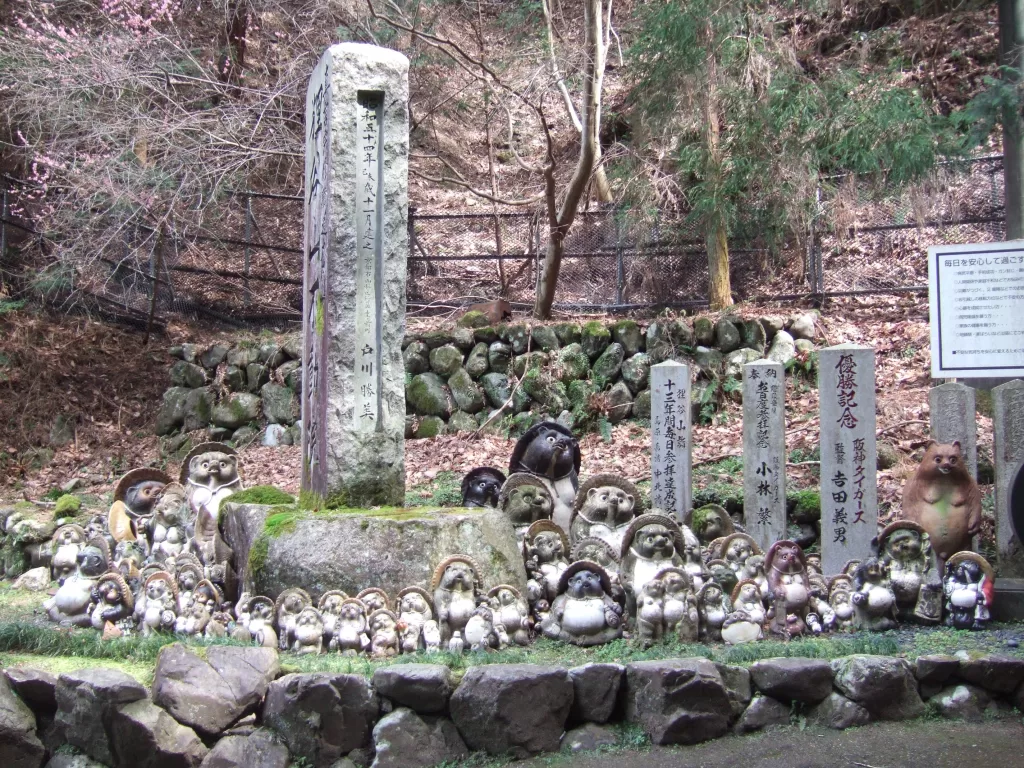Celebrating the Harvest: Aki Matsuri (Autumn Festival) at Kyoto’s Tanukidani Fudoin

Tanukidani Fudō-in Temple’s Fall Festival
Every season brings its own sense of wonder in Japan, but it’s during the change of these seasons that some of the most revered rituals take place. In early November, monks at Tanukidani-san Fudō-in Temple conduct their annual Aki Matsuri – a traditional autumn festival where visitors inscribe their wishes on wooden tablets and entrust them to the flames.
Part of a broader practice known as shugendō, this ritual draws from mountain asceticism, marking a unique cultural character within Kyoto’s festival scene. Elements of Buddhism are fused into these rituals, leaving traces of profound sutras hanging in the air as the sacred bonfire blazes brighter.
The Hidden Magic: Tanukidani Fudoin
Despite not being as prominent as other shrines across Kyoto, Tanukidani Fudoin encapsulates an enchanting atmosphere that is all its own. Lining its grounds are charming Tanuki (racoon) statues, adding to the unique charm and essence of this sacred space.
During Aki Matsuri, participants are guided into this stunning setting with “power dumplings”, a symbolically potent taste of support designed to invigorate strength in individuals for the season ahead.
The Ritual: Wishes Into Fire
At the heart of Aki Matsuri lies a grand bonfire – a vessel for transforming wishes into prayers. Participants inscribe their dreams and aspirations onto wooden tablets before these are tossed into the flames by practicing Buddhist monks. This act symbolizes letting go of past mistakes and welcoming new blessings. It’s one of the most anticipated Kyoto events in November.
As the tablets crackle and smolder amongst the flames, rhythmic chants echo throughout. It’s an orchestrated composition between fire, voice, and faith. An expression seamlessly blending religious devotion with natural elements — rooting deeply into traditions while renewing hopes for the future.

A Community Affair: Preparations & Significance
Autumn festivals like Aki Matsuri ripple across Japan after the rice harvest each year — serving both as a gesture of gratitude towards divine forces for good harvests and as a prayer for familial wellbeing.
Yet beyond spiritual significance, preparations for Aki Matsuri have become community cornerstones too. Weeks before the festival begins, young men and women congregate to rehearse dances and align tunes. It becomes an arena where tradition meets camaraderie — an embodiment of celebration that entwines with Japan’s cultural tapestry over time.
In Kyoto’s humble Shiromine-cho area where Tanukidani Fudō-in Temple resides, each November hosts such festivities – proof that culture can blossom amidst tranquility too. Distinctly traditional yet alive with vibrant energy from its younger generation actively participating in age-old practices.
Looking beyond religious dimensions reveals how such festivals are integral parts of Japanese social dynamics. Houses come alive with decorations; streets brim with anticipation; conversations buzz around shared rituals — firmly cementing bonds between neighbors and generations alike.
If you want to experience the captivating world of geiko and maiko in Kyoto, don’t miss out on the enchanting Gion Odori dance performance.